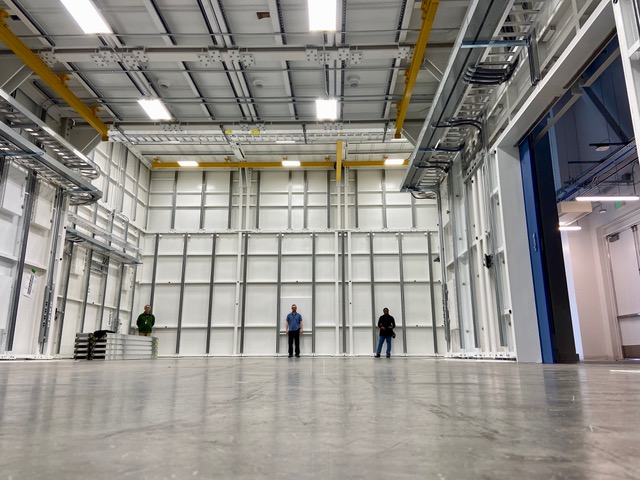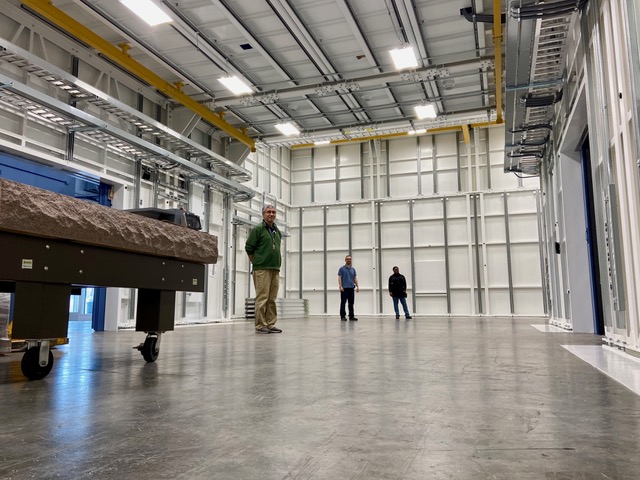The countdown clock doesn’t lie. We’re now at fewer than 20 days to the end of user operations and the start of the Advanced Photon Source (APS) Upgrade’s removal and installation period. Hundreds of people have gone above and beyond to get us to this point, and we’re ready to begin the year-long shutdown and complete the transformation of the APS.
With that in mind, I thought I would talk to you this month about what is going to change at the APS starting April 17. It would be easy for me to just say “everything,” and that wouldn’t be too far off the mark. As I said above, user operations will end on that date, and one week later we will officially shut down the accelerators and stop generating the X-ray beam that has been the hallmark of this facility for more than 25 years.
From that point, the APS will change from a scientific user facility to an active construction site. Though the Upgrade is a driver for much of the work that will occur, in fact there are many players involved and coordination across all areas and work teams is critical.
The first area which receives a great deal of attention is of course the storage ring. We will be removing the storage ring at the center of the facility piece by piece, and replacing it with a new multi-bend achromat lattice, which we have assembled in 200 pieces, or modules. These modules will be connected to form 40 sectors around the ring, and each sector weighs about 148,000 pounds. We will carefully transport this heavy equipment from an offsite facility about a mile north of the Argonne campus and loading into the APS ring. This equipment will use the superdoors leading to the APS infield, so we will integrate the schedule with Linac and Booster work being conducted in parallel.
On top of that, literally, is the Mezzanine area which holds the power supply, diagnostics, controls and other racks for the storage ring. A large fraction of these racks will be replaced including all associated cabling, so this area also will be a hive of activity.


The interior of the HEXM experiment station in the Long Beamline Building.
Then there is the experimental floor, on which – between the project, our partners, and operations groups – almost all beamlines will be affected at one time or another. As part of the project, seven feature beamlines will be constructed and the critical infrastructure needed to enable the completion of two more will be built. Beamline work is already ongoing – see the photos above for the progress of the High-Energy X-ray Microscope (HEXM) experiment station in the Long Beamline Building. In preparation for the shutdown, we have demolished original experiment stations in sectors 8, 9 and 11, preparing those sites for construction. The X-ray Photon Correlation Spectroscopy (XPCS) and Coherent Surface Scattering Imaging (CSSI) feature beamlines will be built at 8-ID and 9-ID, and 11-ID will receive a significant enhancement.
Across the facility, experiment stations will be completed on various schedules, both before and after the APS X-ray beam returns in 2024. Suffice it to say, this is an enormous effort, one that will require hundreds of people to complete.
It’s important to note that safety during the shutdown period has been and will continue to be our top priority. The APS Upgrade team, PSC management and the Laboratory operations, working together, have developed a comprehensive safety plan designed to protect everyone doing work during the shutdown. This plan includes:
- Limited access to the APS facility. We will be moving to 24/7 key card access for the LOMs and the experiment floor starting April 17. We understand that a small number of users may be on site for experiments using non-beamline equipment, and an approved Experiment Safety Assessment Form (ESAF) will be required for any user access.
- Designated construction areas. These will be clearly marked with signs and caution tape, and personal protective equipment will be required to enter them. This includes hard hats, work gloves and over-the-ankle safety boots with a steel or composite toe.
- Clear communication regarding construction work. Information will be distributed to those working on the project weekly about which areas are designated construction zones for the following week.
These monthly Upgrade Updates will continue throughout the shutdown. We’ll use them to keep you apprised of the progress of the project, and to let you know about the schedule and process for first experiments at the upgraded APS. All of us are looking forward to completing this project safely, and welcoming users back to the beamlines in 2024.
Keep up with the APS Upgrade project at our website, www.aps.anl.gov/APS-Upgrade. One thing you will find there is the latest People of the APS Upgrade profile on supply chain manager Aleksander Stankovik.
Thank you, and I’ll talk to you next month.
Jim Kerby
APS Upgrade Project Director
